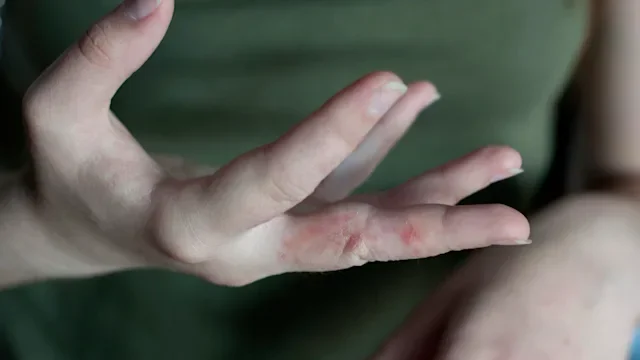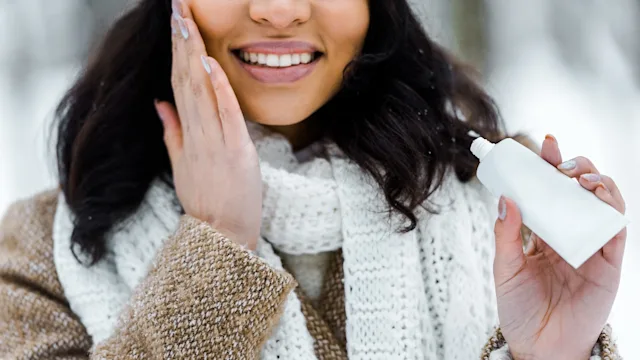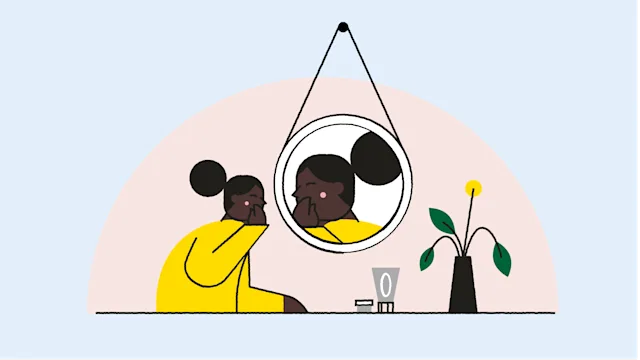Key takeaways:
Hangnails are small pieces of torn skin around the nail.
Although they're common and treatable, hangnails can be uncomfortable and may cause skin infections.
Proper skin and nail care can help you avoid hangnails.
You might not pay close attention to the delicate skin around your nails until a hangnail pops up. If you've ever had one –– and chances are that you have –– then you know how painful these hanging pieces of skin can be.
Hangnails can affect anyone, especially people who pick at their cuticles or bite their nails. The right skin and nail care can help you get rid of hangnails and prevent them from coming back.
What is a hangnail?
Despite its name, a hangnail isn't part of your nail. It's a small piece of torn skin near the cuticle (base) of your nail or along the side of it. They're easy to spot, as these dry, rough pieces of skin often dangle or jut out around the nail. And they can be surprisingly irritating or painful.
Search and compare options
Hangnails are often confused with ingrown nails, but they are not the same. An ingrown nail occurs when a nail grows into the surrounding soft tissue. Hangnails generally appear on the fingers, while ingrown nails are more common on the toes.
Dry skin, minor cuts, or other trauma to the skin near your nails may cause hangnails. Because dry skin is more susceptible to irritation or breakage, you might notice hangnails more often in winter, when the air is cold and dry. You might also be more prone to them if you pick at your nails.
How do you get rid of hangnails safely?
When you get a hangnail, you might be tempted to rip it off. But pulling or biting a hangnail can make it more painful. It can also make skin tearing worse and lead to infection.
Simple home remedies may help, however. Here's what you should do to get rid of hangnails safely:
Wash your hands with an antibacterial hand soap. Then soak the affected finger in warm water for a few minutes to soften the hangnail.
Use a sterilized pair of nail scissors or cuticle clippers to gently clip the hanging skin at its base, but no deeper.
Apply a layer of antibiotic ointment or cream after you've removed the hangnail.
Keep the area clean for the next few days as it heals.
You can repeat the warm soak two or three times a day.
Read more like this
Explore these related articles, suggested for readers like you.
What should you do if your hangnail gets infected?
Hangnails get infected when bacteria enters via the torn skin. If you have an infected hangnail –– paronychia is the most common hangnail infection –– you may notice these signs:
Pain
Swelling or redness
Warmth or tenderness to the touch
An abscess or pus-filled blister
Fortunately, hangnail infections are very treatable. See a healthcare provider, as the correct treatment will depend on the nature and severity of your symptoms. For example, if you have an abscess, they might drain it before cleaning the area and covering it while it heals. In rare instances, they may prescribe oral antibiotics for hangnail infections.
Tips to prevent hangnails
Try these skin and nail care tips to prevent hangnails from forming:
Keep your hands moisturized. Dry skin is the leading cause of hangnails. So it's essential to moisturize your hands regularly. Use thick hand creams or ointments, especially after washing your hands. You can use moisturizing oils to show your cuticles some T.L.C. as well.
Limit exposure to moisture and irritants. People whose hands are frequently wet or exposed to chemicals may have a higher risk of chronic infection in the skin surrounding their nails. Examples include swimmers, bartenders, and florists. That's because they’re more likely to be exposed to bacteria that thrive in wet environments. So try to limit exposure when you can.
Wear gloves. You won't always be able to avoid irritants. And when you can't, gloves might be the next best thing. Wearing gloves can protect your hands from dry air, harsh cleaning products, and other irritants. Slip on a pair of thick gloves before you go outside in cold weather. And use rubber gloves during activities like gardening or washing dishes.
Do not cut your cuticles. This practice is still popular among some manicurists. But cutting your cuticles can lead to hangnails and infections. Instead, gently move your cuticles back with a cuticle pusher.
Try not to bite your nails or pick at your cuticles. As tempting and habit-forming as it may be, biting your nails is another way to increase your risk of hangnails and bacterial or fungal infections. Keeping your nails groomed may help you stop biting and picking at them.
The bottom line
Hangnails happen to the best of us. But you may be able to prevent them or stop them from coming back with smart skin and nail care tips. Keep your hands clean and moisturized, and protect them from harsh soaps and chemicals to avoid pesky hangnails.

Why trust our experts?



References
Baghchechi, M., et al. (2020). Art of prevention: The importance of tackling the nail biting habit. International Journal of Women’s Dermatology.
Dhingra, G., et al. (2022). Nail disorders: An updated review. International Journal of Pharmaceutical Sciences Review and Research.
Jangra, R. S., et al. (2019). Hangnail: A simple solution to a common problem. Journal of the American Academy of Dermatology.
Kaur, I., et al. (2019). Hangnails: Paste them back. Pediatric Dermatology.
Leggit, J. C. (2017). Acute and chronic paronychia. American Family Physician.
MedlinePlus. (2021). Paronychia.
University of Utah Healthcare. (2015). The danger of cutting your cuticles.

















